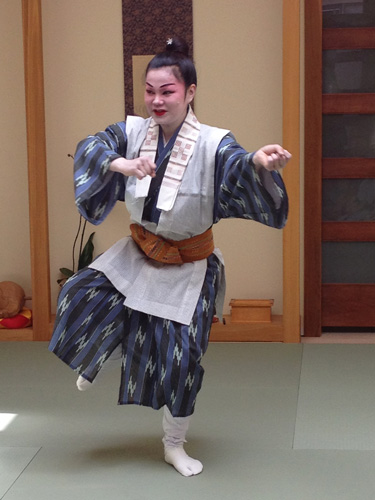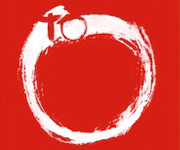24 Jun
P. Anne Winter writes:
Now for something different from our usual blogs. Here are videos to show you highly-accomplished traditional Ryukyu dancer Tomomi Mayaki.These are from one of her latest appearances in this city. She has been performing at the Okinawan Ryoji Restaurant in Little Italy in addition to the Tao Sangha Healing Centre. Noriko Oda shot the videos. She hopes as I do that you will enjoy them and get a sense of how unique this dancer’s movements are.
A friend of the Ryoji Restaurant, Michiko Abe-Kolzowski, kindly explained some of the themes. Currently Ryukyuan or old Okinawa dance is the style most performed of all the forms of Okinawan dance. The videos below demonstrate some of the most famous stories told through the ages. Check out that huge blue and red hat!
Okinawa is the most remote southern island of Japan. As it is closer to Asia than the rest of Japan, it has a lot of influences from its western neighbors such as Bali and China. This is apparent in all aspects of Okinawan life. The colours of its costumes are stronger with busy rather than subdued patterns. Even the food is very different if I can judge from the menu at the Ryoji restaurant.
As to be expected, the music was much more lively at times like a jig. At other times, it was like a Hawaiian lullaby. In other words, it is as if it’s from a different country.
Thus it is no surprise that I was bowled over by Tomomi’s hypnotic performance at the Tao Sangha Temple. See Blog number 382 to understand how I came across her.
If you wish to experience more Okinawan culture, the Japanese Canadian Cultural Centre will have a craft fair and performance on July 31 of this year. I will be reporting more about this event soon.
The videos:
Yotsudake 四つ竹 (よつだけ) 古典:女踊
“Yotsudake” literally means “four bamboos,” and refers to the tasseled pair of bamboo castanets in each hand. The infamous hat is a stylized lotus flower with ocean waves. The dance is often performed with up to 50 dancers who represent a glen of flowers in summer. It represents the beauty, resilience and connectedness of all living things.
2 、 Kanayo 加那ヨー(かなよー) 雑踊り:女踊り http://youtu.be/d_bT7p55WfM
This dance is an expression of love. It is often performed with a male and a female. The male demonstrates his love by washing his lover’s hair in a river.
3、 Nuchibana 貫花 (ぬちばな) 雑踊り:女踊り http://youtu.be/OD77M-4YCcE
“Nuchibana” is like a Hawaiian lei with flowers strung together, but not looped, like the one Tomomi used for this dance, said Michiko. The name refers to making a gift for the one you love.
4、 Nubuikudochi 上り口説 (ぬぶいくどぅち) 雑踊り:男踊り http://youtu.be/yWAi3bMVdGk
This is a joyful song which fits the type of festival where it is usually played.
5、 Hatomabushi 鳩間節 (はとまぶし) 雑踊り: 男踊り http://youtu.be/zEKCMZ7xIR8
Usually performed solo, this is a dance with much larger movements and is perhaps the newest of the five performed here. It was created in the mid 1900’s and has a number of variations depending on the instructor.



1 Comment